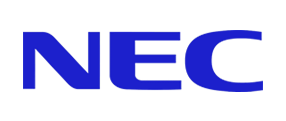Revolutionizing Physical Security for the Modern Era
In today’s rapidly evolving security landscape, Physical Security as a Service (PhySaaS) is emerging as a game-changer for businesses seeking comprehensive protection. PhySaaS offers a fully managed, hybrid cloud-based security platform that integrates cutting-edge technologies to safeguard people, assets, and facilities.
What is PhySaaS?
PhySaaS is an innovative approach to physical security that combines video surveillance, access control, environmental monitoring, and more into a single, unified platform. This cloud-based solution eliminates the need for traditional hardware like NVRs, DVRs, and on-premises servers, replacing them with a more flexible and scalable system.
Key Components of PhySaaS
• Video Security: High-quality cameras with onboard processing and storage capabilities.
• Access Control: Seamlessly integrated systems for managing entry points.
• Environmental Monitoring: Sensors for air quality, temperature, and other environmental factors.
• Alarm Systems: 24/7 professional monitoring and intrusion detection.
• Visitor Management: Streamlined check-in processes integrated with other security features.
Benefits of PhySaaS over Traditional Security Systems
• Cost-Effectiveness: PhySaaS operates on a monthly recurring charge (MRC) plan, transforming large capital expenditures into manageable operational costs. This model eliminates upfront hardware investments and reduces maintenance expenses.
• Enhanced Security and Monitoring: PhySaaS leverages AI for proactive protection and real-time threat detection and response, significantly improving overall security posture.
• Scalability and Flexibility: Unlike traditional systems requiring physical upgrades, PhySaaS easily scales to accommodate multiple locations and adapt to changing security needs.
• Remote Management and Accessibility: PhySaaS provides a centralized interface for managing all security aspects remotely, enabling security teams to monitor and respond to incidents from anywhere, at any time, using any device.
• Automatic Updates and Future-Proofing: Customers benefit from automatic software updates, ensuring the security system remains cutting-edge without manual upgrades or hardware replacements.
• Comprehensive Integration: PhySaaS offers seamless integration of various security components, providing a more cohesive and effective security strategy compared to disparate traditional systems.
Tips for Transitioning to PhySaaS
• For First-Time Buyers:
• Assess Your Needs: Carefully evaluate your current security requirements and future growth plans. Identify key areas needing improvement.
• Start Small: Consider piloting PhySaaS in a specific area or location before a full-scale deployment.
• Prioritize Integration: Ensure the PhySaaS solution integrates with your existing IT infrastructure and other business systems.
• Understand the MRC Model: Familiarize yourself with the monthly recurring charge (MRC) model and factor it into your budget.
• Gradually Replacing Traditional Security Solutions:
• Phased Rollout: Implement PhySaaS in phases, replacing outdated components of your traditional system one at a time.
• Hybrid Approach: Run PhySaaS alongside your existing system during the transition period to ensure continuous security coverage.
• Data Migration: Plan for a smooth data migration process to transfer historical security data to the PhySaaS platform.
• Training and Support: Provide adequate training and support to your security team to ensure they can effectively use the new system.
Final Thoughts
PhySaaS represents a significant leap forward in physical security technology. By offering a fully managed, cloud-based solution, it addresses many of the limitations of traditional security systems. For businesses looking to enhance their security measures while optimizing costs and operational efficiency, PhySaaS presents a compelling and future-ready option. As the security landscape continues to evolve, PhySaaS stands at the forefront, ready to meet the challenges of tomorrow’s security needs.




Recent Comments